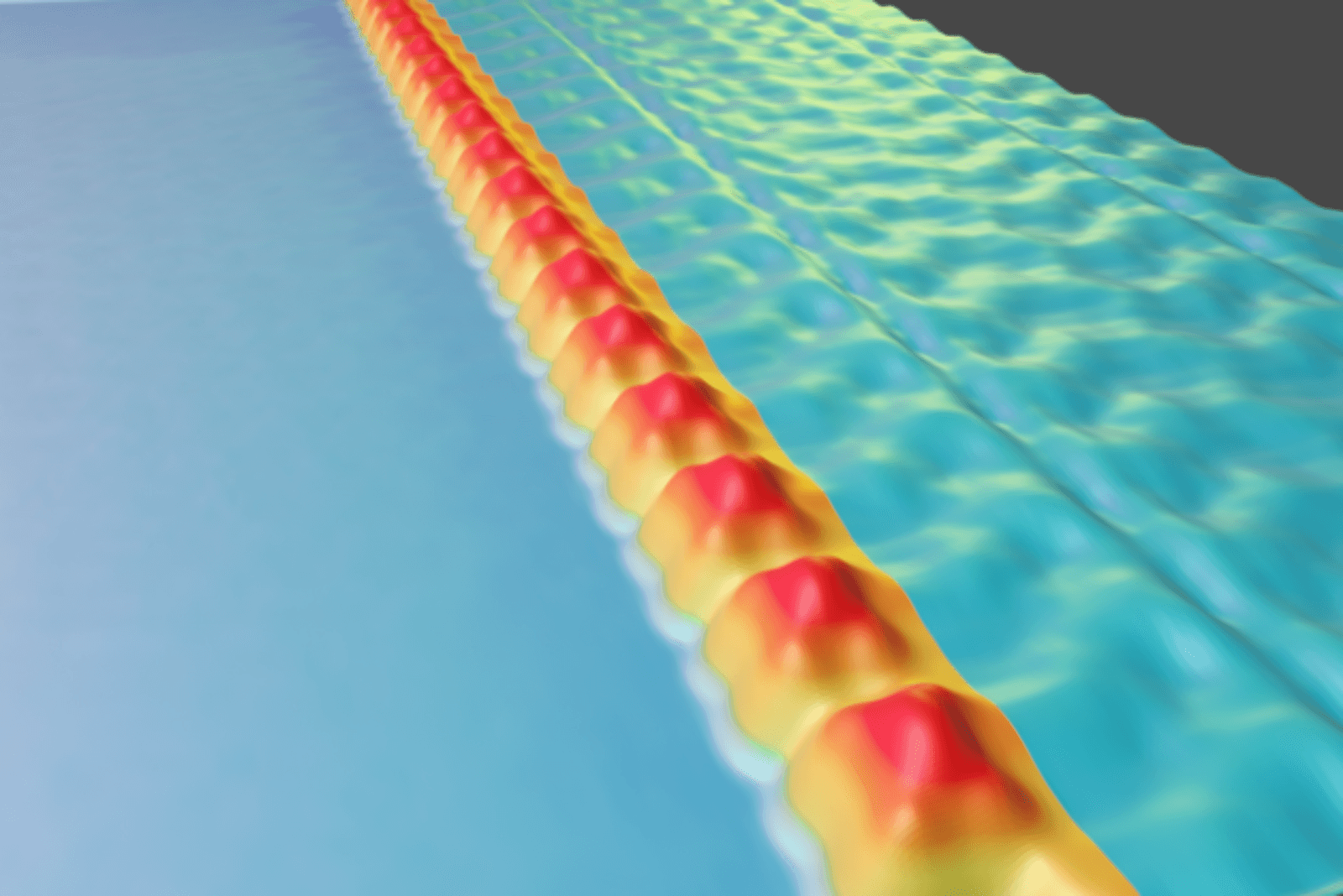Measuring Up
by Alan S. Brown
It's never an easy task to figure out—and measure—what you have done at the nanoscale

The Author
The Researchers
At the nanoscale, where everything is measured in millionths of a meter and some objects are so small that they start to show quantum properties, it is never an easy task to figure out—and measure—what you have done. This month, pay attention to those measurements. They could lead to real progress in making electronic circuits out of individual molecules, building crystals out of electrons, or even figuring out what the roots of a plant are doing while watching the leaves grow.
Molecular electronics
Using individual molecules to create electronic circuits has been a grand challenge for nanoscientists for decades. Those circuits would run faster, denser, and more efficiently than today’s electronics. Better yet, those devices could take advantage of a molecule’s chemical reactions or shape changes to create unique functions, like emitting a signal in the presence of a toxic chemical or virus. Progress, however, has been slow. That is why a recent accomplishment by Michael Crommie, a member of the Kavli Energy NanoScience Institute at Berkeley is so interesting. His team has demonstrated it can deposit a one-dimensional (atom-wide) line of 15 molecules over an insulated strip of graphene and then use an electric current to fill or empty them of electrons—or create an alternating electron/no electron pattern—simply by controlling the current. The result is a structure that could act like an on/off switch or perhaps a capacitor or register. While others have electrically tuned one-dimensional molecular wires before, Crommie is the first to create an instrument that can image those wires as they are tuned. This will enable him to conduct investigations that would have been impossible in the past.
Crystals of electrons
In 1934, theoretical physicist Eugene Wigner predicted that he could form a crystal if he could figure a way for the repulsion of negatively charged electrons to dominate the electrons’ kinetic energy. Easier said than done. Electrons move fast enough to melt that crystal before it was even done. Scientists tried all sort of tricks, including gigantic magnetic fields, to keep electrons from moving, but they made a complete crystal. Now, 86 years later, Kavli Institute at Cornell researchers Kin Fai Mak and Jie Shan succeeded by trapping electrons between two layers of semiconductors whose crystals did not match up evenly with each other. This created a hexagonal grid that locked electrons in place. Then Mak and Shan created a way to observe whether they had succeeded, an equally impressive achievement, given the propensity of the crystal to self-destruct.
Plant success
Scientists often talk about getting to the root of a problem, but when it comes to plant biology, the focus is almost always on what is above the ground. Now, a team of Cornell University researchers plan to develop a 1-to-2-ft-long robot that moves through the soil like a worm, recording soil properties, moisture, root growth, and microbiome data. A key part of that project involves AquaDust, a clever engineered nanoparticle developed by Kavli Institute at Cornell bioengineer Abraham Stroock. The particle is a hydrogel that contains dye groups that will fluoresce when hit with energy. The particle swells when it comes in contact with water, changing the distance between the dyes and the wavelength at which it fluoresces. By seeding the ground with AquaDust, the robots will be able to trace how roots and microbiomes interact with moisture below the surface.
Graphite sensors
Graphene, an atomically thin sheet of carbon, could make outstanding sensors due to its high strength and ability to handle stress. Peter Steeneken, a member of the Kavli Institute of Nanoscience at Delft Technical University, takes a mechanical approach to this. First, he creates a graphene dumbbell, two round chambers linked by a connector with nanoscale perforations in it. Then he blasts the chamber containing gas with a laser. The gas expands and rushes down the pipe where some of it exits through the perforation. Instead of measuring the gas, Steeneken measures how fast the other chamber vibrates (more than 100,000 times per second). Each combination of gas and perforation has a unique vibration pattern that tells him which gas was in the first chamber. This mechanical technology could open the door to tiny, low-cost sensors for determining air quality and gas mixtures in industrial applications.
Kavli researchers honored
Piedong Yang, a director of the Kavli Energy NanoScience Institute at Berkeley, has been elected a fellow of the American Association for the Advancement of Science (AAAS). He is recognized for his pioneering work on semiconductor nanowires, which are more than 10,000 times thinner than a human hair. Over the past few years, he has combined nanowires with sunlight and bacteria to convert greenhouse carbon dioxide emissions into valuable chemical products. Yang was also a director of the Dept. of Energy’s Joint Center for Artificial Photosynthesis since its founding in 2011.
Also honored was Michael Crommie, who recently won the Davisson-Germer Prize in Atomic or Surface Physics. He is cited for “outstanding contributions to understanding and controlling the fundamental electronic properties of low-dimensional systems at the atomic scale.”